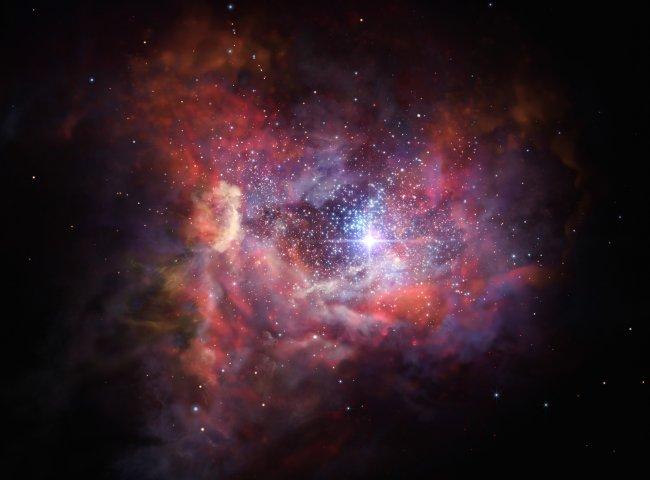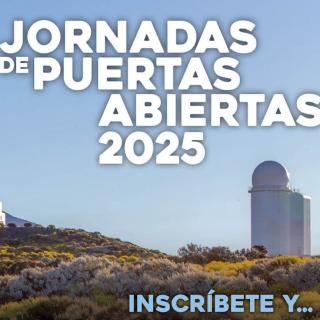An international team of astronomers, led by Nicolas Laporte of University College London (UCL) and previous researcher at the Instituto de Astrofísica de Canarias (IAC) , used the Atacama Large Millimeter/submillimeter Array (ALMA) and the X-shooter instrument on ESO’s Very Large Telescope to observe A2744_YD4, the youngest and most remote galaxy ever seen by ALMA. The study is published today in The Astrophysical Journal Letters and shed light about the birth and death of the very first stars of the universe.
They were surprised to find that this youthful galaxy contained an abundance of interstellar dust — dust formed by the deaths of an earlier generation of stars.
“Not only is A2744_YD4 the most distant galaxy yet observed by ALMA,” comments Nicolas Laporte, “but the detection of so much dust indicates early supernovae must have already polluted this galaxy. In addition, this is the most distant detection of oxygen in the universe.”
Cosmic dust is composed of silicon, carbon, and aluminium, in grains as small as a millionth of a centimetre across. These grains are forged inside stars and are scattered across the cosmos when the stars die, most spectacularly in supernova explosions, the final fate of short-lived, massive stars. Today, this dust is plentiful and is a key building block in the formation of stars, planets and complex molecules; but in the early Universe — before the first generations of stars died out — it was scarce.
The observations of the dusty galaxy A2744_YD4 were made possible by pointing the ALMA array through a massive galaxy cluster called Abell 2744. Because of a phenomenon called gravitational lensing, the cluster acted like a giant cosmic “telescope” to magnify the more distant A2777_YD4 by about 1.8 times, allowing the team to peer far back into the early Universe.
Follow-up observations undertaken with the Very Large Telescope in Chile confirmed the enormous distance to A2777_YD4. The galaxy appears to us as it was when the Universe was only 600 million years old, during the period when the first stars and galaxies were forming. "We also used images obtained with the Spitzer Space Telescope to calculate the approximate redshift (from which the distance to the galaxy can be determined) even before obtaining its spectrum", points out the IAC astrophysicist Alina Streblyanska. "Spitzer's data, along with that of the Hubble Space Telescope and the VLT in the near infrared were crucial to estimate the redshift of 8.4," adds Ismael Pérez Fournon, researcher at the IAC as well and at the University of La Laguna (ULL).
The detection of dust in the early Universe provides a new probe of when the first supernovae exploded and hence the time when the first hot stars bathed the Universe in light. Determining the timing of this “cosmic dawn” is one of the holy grails of modern astronomy, and it can be probed through the study of early interstellar dust.
The team estimates that A2744_YD4 contained an amount of dust equivalent to 6 million times the mass of our Sun, while the galaxy’s total stellar mass — the mass of all its stars — was 2 billion times the mass of our Sun. The team also measured the rate of star formation in A2744_YD4 and found that stars are forming at a rate of 20 solar masses per year — compared to just one solar mass per year in the Milky Way.
“This rate is not unusual for such a distant galaxy, but it does shed light on how quickly the dust in A2744_YD4 formed,” explains Richard Ellis (ESO and UCL), a co-author of the study. “Remarkably, the required time is only about 200 million years — so we are witnessing this galaxy shortly after its formation.”
This means that significant star formation began approximately 200 million years before the epoch at which the galaxy is being observed. This provides a great opportunity for ALMA and the forthcoming large telescopes to help study the era when the first stars and galaxies “switched on” — the earliest epoch yet probed. Our Sun, our planet and our existence are the products — 13 billion years later — of this first generation of stars. By studying their formation, lives, and deaths, we are exploring our origins.
And Laporte concludes: “Further measurements of this kind offer the exciting prospect of tracing early star formation and the onset of chemical enrichment, even further back into the early Universe.”
Article: “Dust in the Reionization Era: ALMA Observations of a z =8.38 Gravitationally-Lensed Galaxy” by Laporte et al. Published in The Astrophysical Journal Letters. https://doi.org/10.3847/2041-8213/aa62aa
Contact:
- Nicolas Laporte (UCL): n.laporte [at] ucl.ac.uk (n[dot]laporte[at]ucl[dot]ac[dot]uk)
- Ismael Pérez Fournon (IAC-ULL): ipf [at] iac.es (ipf[at]iac[dot]es) and +34 922605257
- Alina Streblyanska (IAC): alina [at] iac.es (alina[at]iac[dot]es) and +34922605746
- Richard Ellis (ESO and UCL): rellis [at] eso.org (rellis[at]eso[dot]org)
ESO press release: https://www.eso.org/public/unitedkingdom/news/eso1708/
Video 1: Artist’s impression of dust formation by supernovae in A2744_YD4
This artist’s impression shows what the very distant young galaxy A2744_YD4 might look like and how supernovae explosions, the deaths of very massive and brilliant stars, polluted it with dust. ALMA observations of this galaxy, seen when the Universe was just 4% of its current age, are providing insights into the birth and explosive deaths of the very first stars in the Universe. Credit: ESO/M. Kornmesser.
Video 2: Zooming in on the young dusty galaxy A2744_YD4
This zoom video sequence starts with a flight through the faint constellation of Sculptor (The Sculptor). We soon see a rich group of distant galaxies, the cluster Abell 2744, known as Pandora’s Cluster. But continuing even further back into the early Universe we finish the trip looking at the dusty galaxy A2744_YD4, the most distant galaxy ever seen with ALMA. Credit: ALMA (ESO/NAOJ/NRAO), NASA, ESA, ESO and D. Coe (STScI)/J. Merten (Heidelberg/Bologna)/spaceengine.org/Digitized Sky Survey 2.



